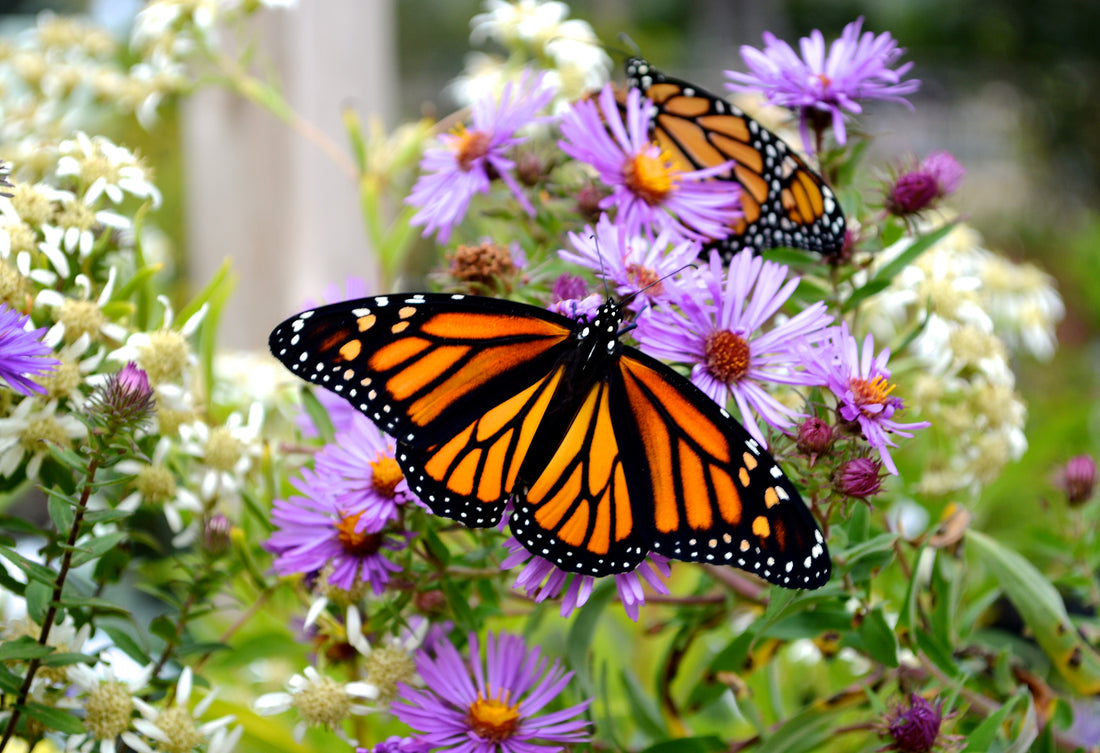
Butterfly Gardening
Diane St JohnShare
When people think about planting a butterfly garden, their primary focus is on butterfly nectar plants. Although these plants are extremely important in attracting butterflies to your yard, they are only half the equation! Before metamorphoses, a butterfly must first be a caterpillar. Butterflies lay their eggs on very specific host plants, called their larval food plants. In many cases, only one type of plant or one family of plant will do for a certain butterfly. If that larval food plant is absent, the butterfly will move on. Spicebushes (larval food plant for the Spicebush Swallowtail) are one example of this phenomenon. Others include Milkweeds (Asclepias family) as larval food plants for Monarchs, and Queen Anne’s Lace (and related plants such as carrots and parsley) for the Black Swallowtail.
What this basically means is that once the eggs hatch into hungry caterpillars, they will eat the host plant (and only the host plant) before forming a chrysalis and then turning into a butterfly. Therefore, what you may consider “weeds” in your garden may be the link in the chain, the lifeline that encourages butterflies in your yard! AND, if you panic and quickly poison all caterpillars that you see without first considering who they are and what they may become, you will also be wondering where the butterflies went! KNOW YOUR ENEMY is the battle cry in organic gardening!!!
The second part of butterfly gardening is providing nectar sources for the butterflies themselves. Since butterflies only fly in warm weather (85 degrees and above), they are summer creatures sipping nectar from summer flowers. Some of their favorites are the Butterfly Bush (Buddleia sp.), Butterfly Weed (Asclepias tuberosa), Gaillardia, Purple Coneflower (Echinacea), Asters, Sedums, Verbena, and Lantana. Butterflies are nomads, and take off if their needs are not met. To keep them around, plan your garden to have a long succession of bloom of key nectar plants, spanning the season from June through September. The list of butterfly nectar sources is very long and you can design a beautiful garden around these choices.
Because butterflies need warmth, they love to “bask” in the sunlight on heated rocks. So be sure to include stone walls or decorative rocks, stone or brick pathways in your butterfly garden plan. If your garden is in an exposed spot, try to provide a windbreak by enclosing it with a fence or hedge. Full sun is the ideal site for a butterfly garden.
As you learn more about butterfly gardening, you will grow in your appreciation of the complex interactions between all living things. You will think twice before cutting down ALL the wild areas of your yard, instead consider them sanctuaries for butterflies and birds. You will be more careful and will avoid spreading poisons to control insects as you gain a new respect for the tenuous balance of nature that we are constantly seeking to understand.
For a link to this handout, with plant lists included, click here https://naturework.com/wp-content/uploads/2017/02/Butterfly_Gardening_including_lists.pdf
